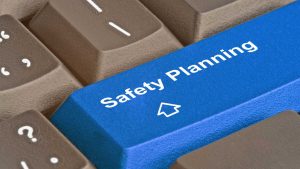Health and safety is a special concern for businesses of every kind. By taking it seriously, you’ll allow your business to avoid a range of avoidable risks. You’ll suffer fewer workplace injuries and accidents. You’ll be better positioned to retain crucial members of staff. You’ll bolster your reputation with the general public. Perhaps most crucially, you’ll be protected against legal consequences which might destroy your business altogether.
Your choice of safety equipment will make a big difference. What this equipment looks like, however, will depend on the specific needs of your profitable business, and the industry in which it operates.
How Can We Assess the the Right Safety Equipment for Business?

When we pick out safety equipment, we need to be sure that it will be able to do its job. Because of the reality of wear and tear, this certainty can’t last forever. Eventually, a piece of equipment will deteriorate to the point that it can’t do its job effectively. For this reason, your health and safety policy should be built around a continuing process of inspection, maintenance and replacement.
Particularly critical pieces of safety equipment might warrant more extensive checks. But in most cases, a quick check at the point of use might be sufficient. Workers wearing facemasks, for example, might get into the habit of checking the filters before use. If this behaviour is built into your instruction, then the habit will be more easily inculcated. In other words, if everyone who puts on a hard hat on your premises gives the top of it a short tap to check that everything’s okay, then you can be reasonably sure that defective hard hats won’t be worn.
What Factors Should We Consider to Ensure the Correct Fit and Comfort of Safety Gear?

When picking out the right safety gear, we don’t need to entirely rely on subjective considerations. Quality gear will carry either a UKCA or CE marking. This will illustrate that it’s been tested, and that it meets the appropriate standards.
Beyond that, we need to think about the comfort of wearable equipment. After all, PPE that isn’t being worn because it’s an encumbrance is unlikely to provide any protection. Think about ease of movement, field of view, and ease of adjustment.
Obtaining the right fit can often make a critical difference. In some cases, loose-fitting, or overly tight PPE might not provide the same standard of safety. For example, if your working shoes don’t fit properly, you might be more likely to fall over!
Provide a range of options, and make sure that workers feel empowered to raise any concerns. After all, they will be among the first to spot any problems with the equipment they’re using. You should think of their insights as a resource to be tapped.









Leave feedback about this